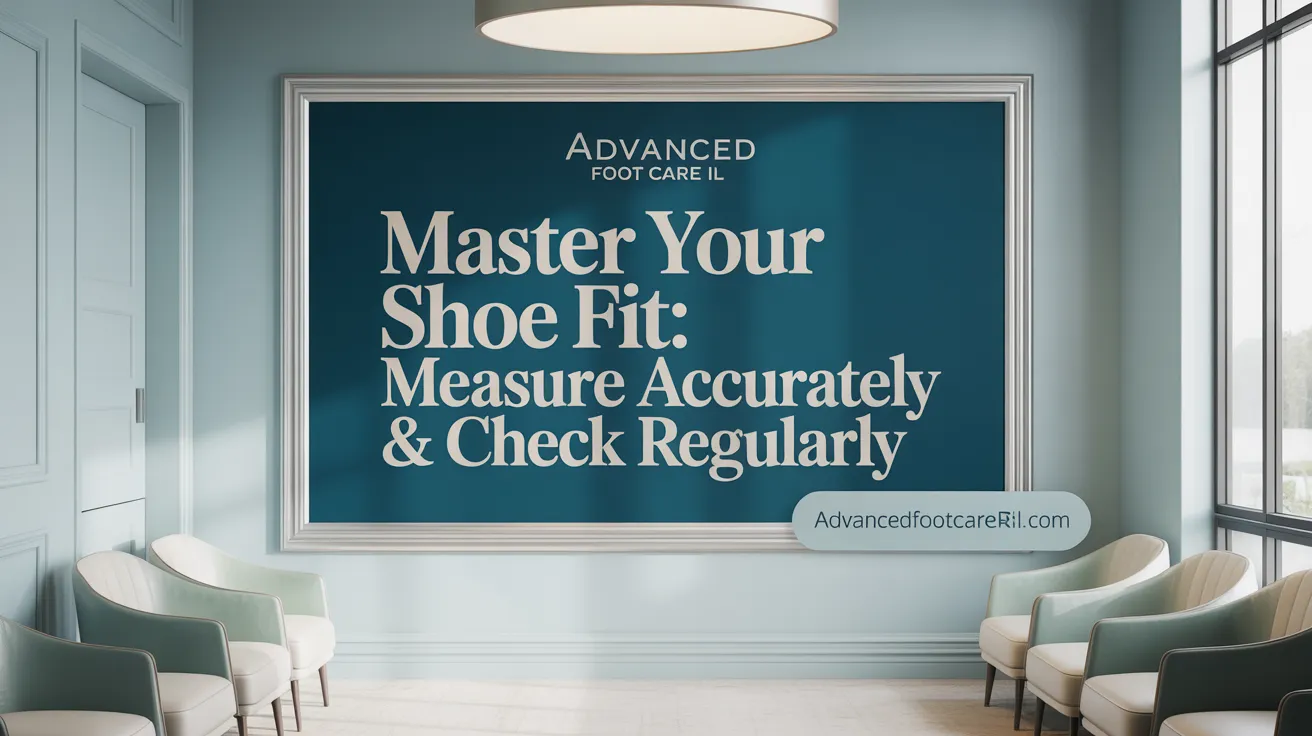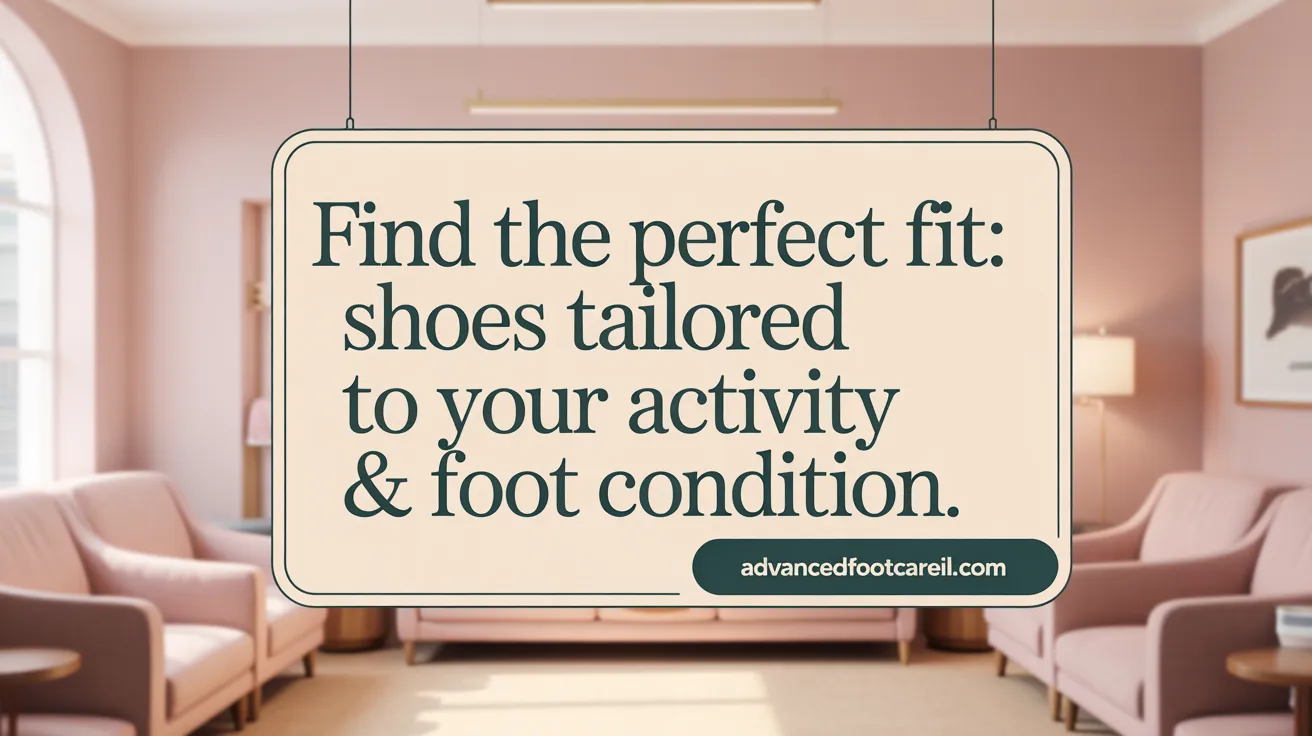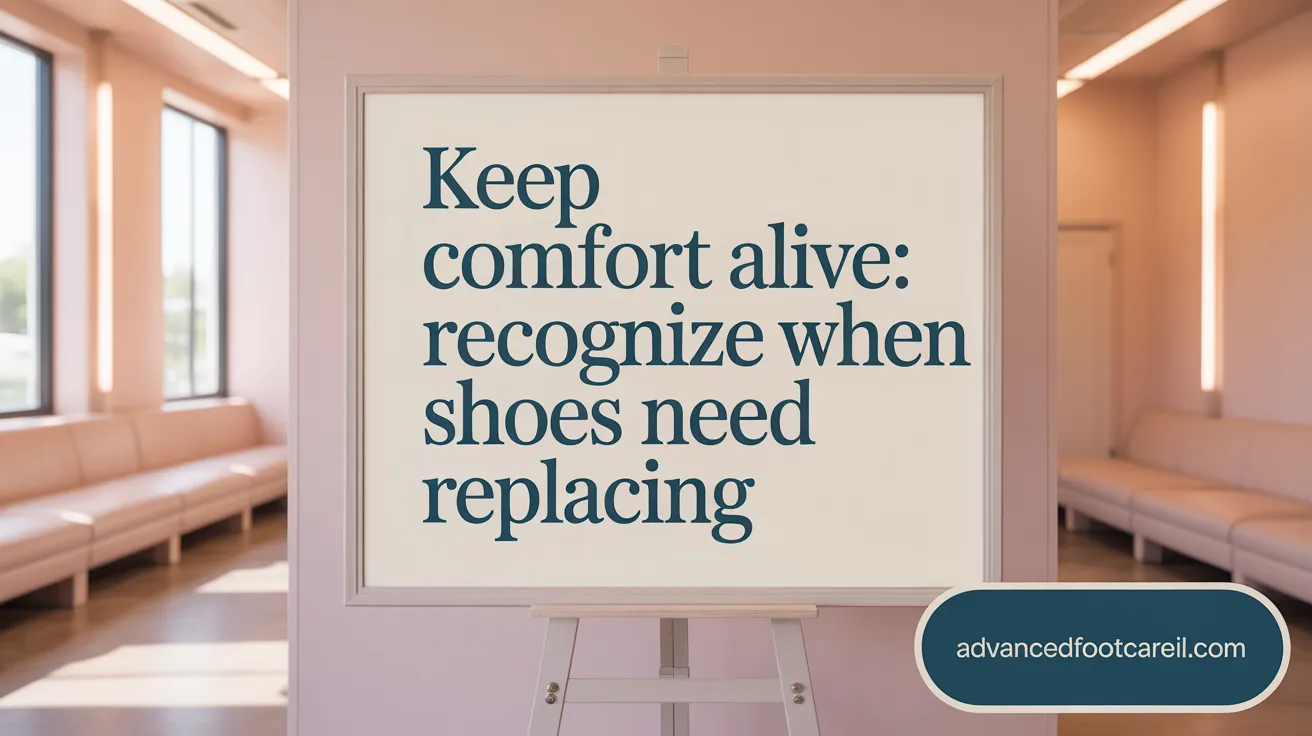Why Proper Footwear Matters for All-Day Comfort
Ensuring Proper Shoe Fit
Choosing footwear with the correct fit is crucial for all-day comfort and foot health. Feet tend to swell throughout the day, so measuring your feet late in the afternoon or evening when they are largest helps ensure the best fit. Properly fitted shoes should have around 3/8" to 1/2" of space at the toe box to accommodate natural toe movement and prevent pinching or rubbing.
Shoes should fit snugly without slipping but allow enough room in the heel and arch areas. Getting your feet professionally measured periodically is important, as foot size and shape can change over time.
Impact of Footwear on Foot Health
Wearing shoes that provide adequate support, cushioning, and stability helps prevent common foot problems such as corns, calluses, plantar fasciitis, bunions, and tendonitis. Shoes with firm heel counters reduce strain on tendons like the Achilles, while wide toe boxes allow for natural toe splay, reducing discomfort especially for conditions like bunions.
Supportive materials and construction, such as a stiff sole that resists twisting and a secure fastening system like laces, improve foot alignment, posture, and balance, helping to avoid injuries and chronic pain.
Overall Benefits of Supportive Shoes
Supportive footwear effectively distributes weight across the foot, reducing pressure points and promoting comfort during prolonged standing or walking. Athletic shoes with cushioning, such as those using EVA foam or gel technologies, absorb shock and protect joints.
Footwear chosen to suit specific activities enhances performance and reduces injury risk — for example, running shoes with proper arch support and heel elevation benefit plantar fasciitis sufferers, while high-top lace-ups provide ankle stability.
Replacing worn-out shoes prevents loss of support and uneven wear that can lead to gait problems. Investing in well-constructed shoes from trusted brands promotes healthier feet, better mobility, and overall well-being throughout daily activities.
Mastering the Fit: Ensuring the Perfect Shoe Size and Shape

Accurate Foot Measurement Including Length, Width, and Depth
Proper shoe fitting starts with precise foot measurement encompassing length, width, and depth. This comprehensive sizing ensures that footwear accommodates the overall dimensions of the foot, preventing issues like pinching or excessive movement within the shoe. For detailed guidance, see Proper Shoe Fit Guidelines and Professional foot measurement.
Importance of Measuring Feet Later in the Day
Feet naturally expand and swell during the day due to activity and gravity. Measuring feet at the end of the day, when they are largest, helps select shoes that remain comfortable throughout daily use and accommodate natural foot swelling. This advice is supported by Shoe Measurement Timing and Afternoon shoe shopping tips.
Space Requirements in the Toe Box
Allowing approximately 3/8" to 1/2" of space from the longest toe to the front of the shoe prevents toe crowding, reduces pressure, and helps avoid deformities such as hammertoes. A roomy, properly shaped toe box enables natural toe positioning and movement. Refer to Toe Space in Shoes and Toe Box Wiggle Room for more information.
Foot Shape Considerations
Understanding your foot shape—whether flat, high-arched, or neutral—is essential for selecting shoes with appropriate arch support and structure. Shoes tailored to foot morphology promote comfortable biomechanics and help prevent strain or injury. Learn more at Foot Health Guide and Choosing shoes based on foot type and comfort.
Signs to Replace Worn Shoes
Shoes should be replaced when they display signs of wear such as worn tread, compressed midsoles, torn stitching, or loss of structural integrity. Continuing to wear worn-out shoes can lead to foot pain, altered gait, and increased risk of injury, emphasizing the need for timely replacement. For guidance, consult When to replace shoes and Replacing worn shoes.
Structural Features of Supportive Footwear: What To Look For

Firm Sole and Foundation
A supportive shoe requires a firm sole and foundation that resists twisting and bending, especially at the mid-section. This ensures stability and protection during walking or running. Shoes should bend only at the toe joints to provide proper foot support without compromising structure. For guidance on shoe sole flexibility, see resources on testing shoe support by bending at the toe.
Arch Support and Heel Counters
Integral to foot health, built-in arch support maintains balance and reduces strain on the foot. Firm heel counters stabilize the heel, preventing excessive movement and decreasing the risk of injuries like Achilles tendonitis. For certain conditions, shoes with a slight heel elevation (10-12mm) can alleviate tension on the plantar fascia. See proper shoe fit guidelines for more details.
Toe Box Roominess and Flexibility
A roomy toe box allows toes to rest naturally and prevents cramping or rubbing, which is crucial for individuals with bunions, hammertoes, or neuromas. Flexibility at the ball of the foot facilitates natural foot mechanics while preventing excessive squeezing. For tips on toe space in shoes and testing shoe flexibility, consult relevant footwear advice.
Materials for Comfort and Support
Supportive footwear typically uses supple yet sturdy materials such as soft leather or high-quality mesh. These provide breathability to reduce moisture buildup while offering adequate support and reducing pressure points that can cause discomfort or injury. For advice on breathable shoe materials and shoe features for comfort, see the linked resources.
Importance of Secure Fastenings Like Laces or Velcro
Secure fastenings prevent slipping and rubbing by keeping the foot firmly in place within the shoe. Lace-up designs generally offer superior support and foot retention compared to slip-on styles, which is crucial for maintaining proper alignment during movement. Additional information on laces and Velcro straps and shoe support and construction can be found in the linked articles.
Choosing Shoes According to Your Activity and Foot Conditions

Activity-Specific Shoes for Different Needs
Wearing shoes tailored to your activity is crucial for optimal foot health and performance. Running shoes provide excellent shock absorption and arch support to handle repetitive impacts, whereas walking shoes offer flexibility at the ball of the foot and a low heel to maintain natural gait. In the sports arena, footwear varies by sport: basketball shoes feature a thick, stiff sole and high ankle support to prevent injuries, volleyball shoes prioritize lightweight and responsive soles for quick movements, and soccer shoes include studded footbeds tailored to playing surfaces.
Benefits of Modern Midsole Technologies
Advances in midsole materials like EVA foam, air, or gel cushioning have transformed shoe comfort and support. These materials provide effective shock absorption, reducing stress on joints and soft tissues during activities. Thick midsoles, such as those in New Balance Fresh Foam or Saucony Triumph models, offer enhanced cushioning particularly beneficial for arthritis pain. Rocker-soled shoes help reduce forefoot pressure, aiding in conditions such as plantar fasciitis.
Foot Conditions Requiring Specialized Footwear
Certain foot issues necessitate footwear with specific design features. Conditions like plantar fasciitis benefit from shoes with firm arch support and a slight heel elevation to ease tension. Wide toe boxes are essential for bunions and neuromas, allowing toes to rest naturally without compression. High-top or lace-up styles provide added ankle stabilization for ankle instability. Avoiding fashion-driven choices such as high heels or worn-out shoes is critical to prevent exacerbating foot problems.
Recommended Shoe Brands and Styles
Trusted brands recognized for their supportive and comfortable footwear include Hoka One One, Brooks, New Balance, and Vionic, which cater to both athletic and everyday needs. For patients requiring specialized footwear due to diabetic neuropathy or arthritis, Orthofeet and Dr. Comfort offer tailored solutions combining support and breathability. Dress shoes should have low heels and cushioned footbeds, with brands like Cole Haan and Rockport providing stylish yet foot-friendly options.
The Role of Footwear Maintenance and Replacement in Comfort

Recognizing Worn-Out Shoe Signs
Worn-out shoes can compromise foot support and comfort. Common indicators include loss of tread, compressed soles, torn stitching, ripped seams, and a collapsed or uneven heel. Discomfort or pinching while wearing shoes often signals the need for replacement. Visual and tactile inspection helps identify structural breakdown that could affect gait. For detailed guidance, see Worn out shoes effects.
Effects of Ill-Fitting or Worn Shoes on Gait and Injury Risk
Wearing ill-fitting or worn footwear disrupts natural foot biomechanics, potentially causing misalignment. This can provoke foot problems like plantar fasciitis, tendonitis, corns, and neuromas. Poorly supported feet increase stress on ankle, knee, and hip joints, raising injury risk. Gait abnormalities from compromised shoes can lead to hip or knee pain and increase susceptibility to sprains or fractures. More information is available in Effects of ill-fitting shoes and Improper footwear consequences.
Replacement Frequency Guidelines
For daily wear, shoes typically need replacement every three to six months, depending on activity level and shoe condition. Walking shoes should be replaced after 300 to 500 miles; running shoes after 600 to 800 miles or every 6–8 months. Regular foot measurement is advised, as foot size and shape change over time, influencing shoe fit and the need for new footwear. For comprehensive tips, visit Shoe Replacement Indicators and Replacing walking shoes every 300 to 500 miles.
Impact of Shoe Hygiene on Foot Health
Shoes harbor bacteria and fungi, which thrive in worn or damp footwear and can cause infections. A foul odor is a sign of bacterial overload and suggests the shoe should be replaced or thoroughly cleaned. Proper shoe hygiene, including regular airing and cleaning, alongside timely replacement, supports foot health by preventing infections and maintaining cushioning and structure essential for comfort and injury prevention. For further advice, see Foot hygiene and care practices and Proper Shoe Fit Guidelines.
Additional Tips for Enhancing All-Day Foot Comfort
Effects of Heel Height and Cushioning
Choosing the right heel height is essential for all-day foot comfort. Ideally, heel height recommendations suggest it should not exceed 25mm (1 inch) to avoid undue stress on the feet and lower limbs. Excessive heel height can disrupt natural walking mechanics and increase pressure on the forefoot. Adequate cushioning, especially in the midsole, plays a critical role in absorbing shock and reducing foot fatigue during prolonged standing or walking. Footwear with cushioned midsoles like EVA foam or gel inserts helps maintain comfort and protect against cushioning shoes for arthritis pain.
Benefits of Breathable Materials
Selecting shoes made from breathable materials such as canvas, leather, or mesh synthetics enhances comfort by promoting air circulation. Breathable uppers help reduce moisture buildup, lowering the risk of bacterial and fungal infections while keeping feet dry and comfortable. Additionally, supple materials can reduce friction and pressure points, which is particularly beneficial for individuals with foot deformities.
Importance of Trying Shoes On with Proper Socks
Always try on shoes with the socks you intend to wear with them. Moisture-wicking synthetic or cotton-blend socks can influence the shoe fit by adding slight thickness and affecting foot positioning. Shopping later in the day when feet are slightly swollen also ensures a better fit that accommodates natural daily foot changes. Testing shoes by walking around the store helps identify potential issues related to support or pinching before committing to a purchase, as noted in shoe fitting tips.
Avoiding High Heels and Certain Footwear Types
Long-term or frequent wearing of high heels is discouraged due to the excessive stress they place on the feet, ankles, and lower body. Instead, flats or supportive walking shoes should be favored for daily wear. Additionally, slip-ons, very flat or overly flexible shoes, slippers, and worn-out footwear lack the necessary support and should be avoided to prevent foot pain and deformities. Well-fitted lace-up shoes with a sturdy sole are preferred for stability and to avoid foot slippage.
When to Seek Professional Advice
If foot or leg pain persists despite wearing properly fitted and supportive shoes, professional evaluation is advised. A podiatrist or physical therapist can assess underlying causes and recommend orthotics or specialized footwear. Seeking guidance is also important for managing complex conditions such as diabetic neuropathy or recurrent foot injuries to ensure appropriate care and prevent complications, including considerations for plantar fasciitis.
Invest in Your Foot Health: Comfortable Shoes Enhance Your Daily Life
Ensuring Proper Fit and Support
Selecting shoes that provide the right fit is crucial. Proper length with about half an inch of space at the toe, adequate width, and secure fastenings like laces help prevent discomfort and injury. Arch support and firm heel counters contribute to balance and stability, reducing strain on feet and ankles.
Activity-Specific Footwear
Wearing shoes tailored to your activity—running shoes for exercise, dress shoes for formalwear—optimizes support. Modern innovations like cushioned midsoles and wide toe boxes address common concerns such as plantar fasciitis and bunions.
Footwear Care and Replacement
Regularly replacing worn shoes is essential to maintain support and prevent pain. Shoes should be flexible at the ball but rigid under the arch, and made from breathable materials to promote foot health.
Prioritize Comfort for Overall Wellbeing
Investing in comfortable, supportive shoes plays a vital role in daily comfort, injury prevention, and overall posture and wellbeing. Prioritize your foot health by choosing footwear that combines fit, support, and activity-appropriate design.
